What the Home of the Future is Missing Today
What the Home of the Future is Missing Today
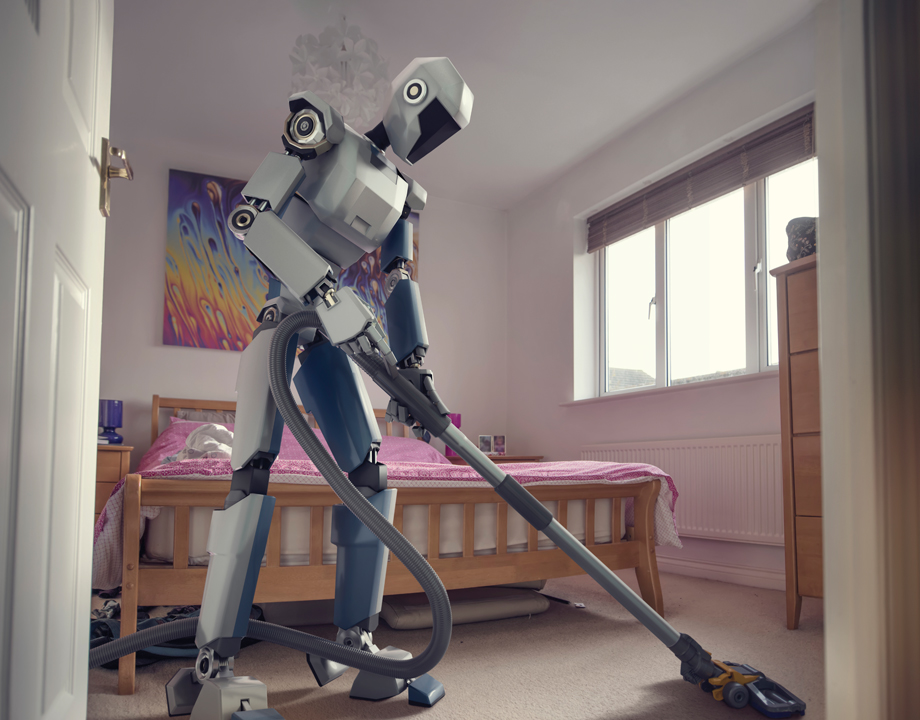

For decades, consumers have been told automatons will soon take care of everyday drudgery at home. So, where are all the household robots?
Meet George Jetson. If you are of a certain age, as soon as you read those words your mind likely conjured up George himself, his boy Elroy, daughter Judy—and, of course, Jane, his wife. But my most salient memory of this 1960s cartoon staple is Rosie, a blue metallic robot on wheels, garbed in a stylized French maid’s uniform. Despite being a machine, Rosie was ever at the ready with a feather duster and a quick comeback. She not only cooked and cleaned for the Jetson family but always managed to find a way to keep the whole gang in line.
As a working mom with two less-than-tidy adolescents, I could definitely use my own Rosie to fluently manage the household chaos and deflect teenage sarcasm. It would seem I’m not alone in wishing for such a robot. Over the last few years, a number of companies have tried to meet the demand for a mechanical maid by creating some form of a robot to help with everyday chores.
“Most of those companies no longer exist,” said Henny Admoni, director of the Human and Robot Partners Laboratory at Carnegie Mellon University in Pittsburgh. “Or, they’ve had their intellectual property bought by bigger companies. There are so many challenges inherent in creating a robot to work in a household space. It’s not only hard to make robots do smart things but also expensive.”
A few household robots are on the market today. The Amazon Astro, available by invitation only, monitors the home. The ASUS Zenbo can display movies and read to kids. Five Elements Robotics has Dash, which can carry in groceries. And, of course, there’s the most popular domestic robot on the market today, the Roomba, which can tidy the floors. But, none of those could be confused with Rosie the Robot.
That raises the question: As technology advances, what will it take for the promise of the home of the future—powered by intelligent domestic robots, natch—to finally be realized?
“Building robots is hard to do in general, but building one for the consumer market is even harder,” said Arshad Hisham, founder and chief executive at inGen Dynamics, Inc., the Palo Alto, Calif.-based maker of Aido, a next-generation modular service robot for the home. “One of the biggest challenges is to find the right scenario where a household robot makes sense—and then a use case needs to be tightly defined, so you can build the robot to those specifications.”
Engineers and entrepreneurs who have pursued building a household robot have followed two separate paths. The first takes after our fictitious friend Rosie, a general-purpose bot that can do a multitude of different tasks around the house, moving from the laundry to the dishes without skipping a beat.
The other approach is to build a machine that focuses on a single task, such as iRobot’s Roomba, which cleans the floors and has been optimized to do it very well. Instead of a Swiss army knife, these would be like an intuitive-to-use corkscrew or a well-balanced cleaver.
Steve Cousins, chief technology officer at Relay Robotics, a maker of autonomous delivery robots for hotels and offices in Campbell, Calif., said too often robot developers bite off more than they can chew when they consider functionality.
The Future of Robotics: Building Robot Brawn with AI Brains
“I think it’s a mistake to start a robot from this more generalized idea of design. Because you are adding so much complexity from the beginning that you can’t possibly get any value out of it,” he explained. “The path we are taking, and I believe it is the right path, is to start with the simplest thing where you can do something useful and then add things as you go. It’s baby steps—but they are important steps that help our robots work well in a human-centric environment.”
As they look for the single, simple application where a domestic robot could become transformative, many engineers gravitate to assistive machines that can help older or disabled adults. Tapomayukh Bhattacharjee, a roboticist at Cornell University in Ithaca, N.Y., currently works on prototypes of robot arms that mount on wheelchairs to help users with severe mobility issues perform common activities of daily living, such as scratching an itch or lifting a forkful of food to the mouth. But Bhattacharjee admits that even with a critical need for this kind of assistance, design remains a formidable challenge.
“Think about what happens when you make a new dish for dinner. A robot may not have seen that dish before and won’t understand how to feed it to you,” he said. “Humans, even if we don’t know what a dish might be called, we can figure out a way to eat it. But because of these subtle differences in texture and hardness—different foods may be on top of each other—it can be difficult to give robots the capabilities they need to identify and then pick up these food ideas with such different characteristics.”
Even the act of feeding is a challenge. Bhattacharjee said transferring food from a bowl to a person’s mouth requires a lot of consideration—and ultimately, to be successful, customization.
“If you go to a care facility, you will see even professional human caregivers need to take a lot of time to learn a patient’s preferences. There can be a lot of friction until those preferences are learned,” he said. “So not only does the robot have to figure out all of these really challenging aspects of identifying food and transferring food, but it also needs to be able to be personalized to an individual’s preferences if it really can help with long-term assistance. These are very difficult problems to solve.”
Another obstacle to household robots is the sheer chaos involved with the home environment. Anyone who has driven on a packed but flowing freeway might scoff that a tranquil household could be more random than six lanes of cars and trucks moshing around at 70 miles per hour. But consider my home: A domestic android would have to be able to navigate steps, stray shoes, hyper dogs, and all manner of random impedimenta on my countertops.
Siddharth Srivastava, director of the Autonomous Agents and Intelligent Robots laboratory at Arizona State University in Tempe, said every household is different. The variety seen from the layout of the floorplan to the personal messes found in kitchens and bathrooms makes it extremely difficult to develop an efficient control for a complicated device.
“If you compare a household with a self-driving car, for example, traffic rules are fairly standard and place some constraints on what others in the environment may do and how they will interact with you,” he said. “We don’t have lanes and traffic lights at home. You have human beings, which are wildly unpredictable, as well as all sorts of unique objects that a robot might have to interact with. To successfully work, it has to know the dynamics of all these different potential interactions. Dealing with that kind of variability is really difficult.”
That lack of structure also means there is a greater risk of safety issues when robots are introduced to the household.
For instance, Relay’s robot is not designed to work in the home and yet, Cousins said he and his design team were startled when their delivery robot was first deployed in a hotel and they witnessed a barefoot three-year-old coming over to hug it.
Human-Robot Interaction: Robots Replace Aging Workers
“That was the first day we put it out into the wild, so to speak, and we looked through the robot’s cameras and saw these little toes and realized that we really need to pay attention to safety,” he said. “You can’t assume people will be wearing steel-toed shoes or boots. You can’t assume that people will stay in certain areas or lanes.”
Cousins’s team also learned that you can’t assume that drunk people won’t try to knock the robot over.
“The interesting thing is that they usually try to immediately pick it back up again,” Cousins said. “But there’s so much even in these business environments that is uncontrolled and variable. And when the robots aren’t designed to deal with that, there is the risk that people, who aren’t going to change what they do to get out of the robot’s way, could inadvertently get hurt if it runs over their foot or falls over on them.”
The final—and perhaps most challenging—frontier to manage in the quest to design domestic robots is human assumption of what such a machine can and cannot do. Hisham said that thanks to Hollywood, people have entirely unrealistic expectations of what to expect from devices.
“Research shows that the more sophisticated a robot looks, the higher one’s subconscious expectations are of what it can do,” he said. “If you design a very human-looking robot, people will expect it to be clever. If it has eyes, you will expect it to be able to see and make discriminations. If it speaks, you will expect it to understand you. That’s why design really is everything when it comes to a robot. The form factor will matter in how it is received by people.”
Those expectations play an important role in whether household robots will be accepted into the home, too.
Take the Roomba. A good friend, who loved her floor cleaning robot for the better part of a year, immediately got rid of it after what she calls the “Great Cat-turd-astrophe of 2019.” One decimated carpet was enough, and she decided it was easier to just vacuum herself. While people may expect both intelligence and versatility from domestic robots, the technology isn’t there yet to provide both.
“There is huge potential for automation in the home, and it’s something we’ve been talking about for a very long time,” Admoni said. “But we need to really put the human and the task at the center of our designs from the very beginning. There needs to be a way to personalize tasks, so they are done the way people want them done for these robots to be accepted.”
My husband, for example, thinks no one else is capable of properly loading the dishwasher. Unless he could tell the robot how to exactly match his preferences, he would likely just do it himself—especially if a dishwasher-loading robot was offered at a $1,000 price point.
Tal Oron-Gilad, a roboticist at Israel’s Ben-Gurion University of the Negev in Beersheba, Israel, said that engineers and roboticists will have to work just as hard to understand user needs as they will on algorithms and form factors to help foster adoption.
Editor's Choice: Fish Learns to Drive a Robot
“You need to not only listen to user needs and preferences, but you need to take the time to help users understand the limitations of any robot,” she said. “Introducing these devices into the home is not a trivial thing, especially if they are being used to assist the elderly or those living with disabilities. It’s important, right from the very beginning, to help people accept these technologies and their current technical limitations.”
That may mean giving up on the idea of having a Rosie in your home, or a robot that acts and looks like her—at least for the time being.
And yet, Bhattacharjee said, the advances made in technology may mean you are already interacting with a household robot without being aware of it. He argued that many “smart” appliances and Internet of Things devices—the smart lightbulbs and automated thermostats and ever-vigilant smart speakers that have already made a home in our homes—may meet the criteria for a robot.
“There’s been a lot of debate in the field about what a robot is—and there are many definitions,” he said. “But if a device has a sensing component and it’s making some sort of decisions based on that sensory information to do some sort of physical action in the world, your ‘smart’ washing machine or dishwasher could be considered a robot. Maybe all these smart devices are where it begins.”
Whether it ends with a robotic hand offering a martini at the end of a hard day at the office is anyone’s guess.
Kayt Sukel is a technology and business writer based in Houston, Texas.
As a working mom with two less-than-tidy adolescents, I could definitely use my own Rosie to fluently manage the household chaos and deflect teenage sarcasm. It would seem I’m not alone in wishing for such a robot. Over the last few years, a number of companies have tried to meet the demand for a mechanical maid by creating some form of a robot to help with everyday chores.
“Most of those companies no longer exist,” said Henny Admoni, director of the Human and Robot Partners Laboratory at Carnegie Mellon University in Pittsburgh. “Or, they’ve had their intellectual property bought by bigger companies. There are so many challenges inherent in creating a robot to work in a household space. It’s not only hard to make robots do smart things but also expensive.”
A few household robots are on the market today. The Amazon Astro, available by invitation only, monitors the home. The ASUS Zenbo can display movies and read to kids. Five Elements Robotics has Dash, which can carry in groceries. And, of course, there’s the most popular domestic robot on the market today, the Roomba, which can tidy the floors. But, none of those could be confused with Rosie the Robot.
That raises the question: As technology advances, what will it take for the promise of the home of the future—powered by intelligent domestic robots, natch—to finally be realized?
Multitool or meat cleaver?
“Building robots is hard to do in general, but building one for the consumer market is even harder,” said Arshad Hisham, founder and chief executive at inGen Dynamics, Inc., the Palo Alto, Calif.-based maker of Aido, a next-generation modular service robot for the home. “One of the biggest challenges is to find the right scenario where a household robot makes sense—and then a use case needs to be tightly defined, so you can build the robot to those specifications.”
Engineers and entrepreneurs who have pursued building a household robot have followed two separate paths. The first takes after our fictitious friend Rosie, a general-purpose bot that can do a multitude of different tasks around the house, moving from the laundry to the dishes without skipping a beat.
The other approach is to build a machine that focuses on a single task, such as iRobot’s Roomba, which cleans the floors and has been optimized to do it very well. Instead of a Swiss army knife, these would be like an intuitive-to-use corkscrew or a well-balanced cleaver.
Steve Cousins, chief technology officer at Relay Robotics, a maker of autonomous delivery robots for hotels and offices in Campbell, Calif., said too often robot developers bite off more than they can chew when they consider functionality.
The Future of Robotics: Building Robot Brawn with AI Brains
“I think it’s a mistake to start a robot from this more generalized idea of design. Because you are adding so much complexity from the beginning that you can’t possibly get any value out of it,” he explained. “The path we are taking, and I believe it is the right path, is to start with the simplest thing where you can do something useful and then add things as you go. It’s baby steps—but they are important steps that help our robots work well in a human-centric environment.”
As they look for the single, simple application where a domestic robot could become transformative, many engineers gravitate to assistive machines that can help older or disabled adults. Tapomayukh Bhattacharjee, a roboticist at Cornell University in Ithaca, N.Y., currently works on prototypes of robot arms that mount on wheelchairs to help users with severe mobility issues perform common activities of daily living, such as scratching an itch or lifting a forkful of food to the mouth. But Bhattacharjee admits that even with a critical need for this kind of assistance, design remains a formidable challenge.
“Think about what happens when you make a new dish for dinner. A robot may not have seen that dish before and won’t understand how to feed it to you,” he said. “Humans, even if we don’t know what a dish might be called, we can figure out a way to eat it. But because of these subtle differences in texture and hardness—different foods may be on top of each other—it can be difficult to give robots the capabilities they need to identify and then pick up these food ideas with such different characteristics.”
Even the act of feeding is a challenge. Bhattacharjee said transferring food from a bowl to a person’s mouth requires a lot of consideration—and ultimately, to be successful, customization.
“If you go to a care facility, you will see even professional human caregivers need to take a lot of time to learn a patient’s preferences. There can be a lot of friction until those preferences are learned,” he said. “So not only does the robot have to figure out all of these really challenging aspects of identifying food and transferring food, but it also needs to be able to be personalized to an individual’s preferences if it really can help with long-term assistance. These are very difficult problems to solve.”
Working without rules
Another obstacle to household robots is the sheer chaos involved with the home environment. Anyone who has driven on a packed but flowing freeway might scoff that a tranquil household could be more random than six lanes of cars and trucks moshing around at 70 miles per hour. But consider my home: A domestic android would have to be able to navigate steps, stray shoes, hyper dogs, and all manner of random impedimenta on my countertops.
Siddharth Srivastava, director of the Autonomous Agents and Intelligent Robots laboratory at Arizona State University in Tempe, said every household is different. The variety seen from the layout of the floorplan to the personal messes found in kitchens and bathrooms makes it extremely difficult to develop an efficient control for a complicated device.
“If you compare a household with a self-driving car, for example, traffic rules are fairly standard and place some constraints on what others in the environment may do and how they will interact with you,” he said. “We don’t have lanes and traffic lights at home. You have human beings, which are wildly unpredictable, as well as all sorts of unique objects that a robot might have to interact with. To successfully work, it has to know the dynamics of all these different potential interactions. Dealing with that kind of variability is really difficult.”
That lack of structure also means there is a greater risk of safety issues when robots are introduced to the household.
For instance, Relay’s robot is not designed to work in the home and yet, Cousins said he and his design team were startled when their delivery robot was first deployed in a hotel and they witnessed a barefoot three-year-old coming over to hug it.
Human-Robot Interaction: Robots Replace Aging Workers
“That was the first day we put it out into the wild, so to speak, and we looked through the robot’s cameras and saw these little toes and realized that we really need to pay attention to safety,” he said. “You can’t assume people will be wearing steel-toed shoes or boots. You can’t assume that people will stay in certain areas or lanes.”
Cousins’s team also learned that you can’t assume that drunk people won’t try to knock the robot over.
“The interesting thing is that they usually try to immediately pick it back up again,” Cousins said. “But there’s so much even in these business environments that is uncontrolled and variable. And when the robots aren’t designed to deal with that, there is the risk that people, who aren’t going to change what they do to get out of the robot’s way, could inadvertently get hurt if it runs over their foot or falls over on them.”
Too great expectations
The final—and perhaps most challenging—frontier to manage in the quest to design domestic robots is human assumption of what such a machine can and cannot do. Hisham said that thanks to Hollywood, people have entirely unrealistic expectations of what to expect from devices.
“Research shows that the more sophisticated a robot looks, the higher one’s subconscious expectations are of what it can do,” he said. “If you design a very human-looking robot, people will expect it to be clever. If it has eyes, you will expect it to be able to see and make discriminations. If it speaks, you will expect it to understand you. That’s why design really is everything when it comes to a robot. The form factor will matter in how it is received by people.”
Those expectations play an important role in whether household robots will be accepted into the home, too.
Take the Roomba. A good friend, who loved her floor cleaning robot for the better part of a year, immediately got rid of it after what she calls the “Great Cat-turd-astrophe of 2019.” One decimated carpet was enough, and she decided it was easier to just vacuum herself. While people may expect both intelligence and versatility from domestic robots, the technology isn’t there yet to provide both.
“There is huge potential for automation in the home, and it’s something we’ve been talking about for a very long time,” Admoni said. “But we need to really put the human and the task at the center of our designs from the very beginning. There needs to be a way to personalize tasks, so they are done the way people want them done for these robots to be accepted.”
My husband, for example, thinks no one else is capable of properly loading the dishwasher. Unless he could tell the robot how to exactly match his preferences, he would likely just do it himself—especially if a dishwasher-loading robot was offered at a $1,000 price point.
Tal Oron-Gilad, a roboticist at Israel’s Ben-Gurion University of the Negev in Beersheba, Israel, said that engineers and roboticists will have to work just as hard to understand user needs as they will on algorithms and form factors to help foster adoption.
Editor's Choice: Fish Learns to Drive a Robot
“You need to not only listen to user needs and preferences, but you need to take the time to help users understand the limitations of any robot,” she said. “Introducing these devices into the home is not a trivial thing, especially if they are being used to assist the elderly or those living with disabilities. It’s important, right from the very beginning, to help people accept these technologies and their current technical limitations.”
That may mean giving up on the idea of having a Rosie in your home, or a robot that acts and looks like her—at least for the time being.
And yet, Bhattacharjee said, the advances made in technology may mean you are already interacting with a household robot without being aware of it. He argued that many “smart” appliances and Internet of Things devices—the smart lightbulbs and automated thermostats and ever-vigilant smart speakers that have already made a home in our homes—may meet the criteria for a robot.
“There’s been a lot of debate in the field about what a robot is—and there are many definitions,” he said. “But if a device has a sensing component and it’s making some sort of decisions based on that sensory information to do some sort of physical action in the world, your ‘smart’ washing machine or dishwasher could be considered a robot. Maybe all these smart devices are where it begins.”
Whether it ends with a robotic hand offering a martini at the end of a hard day at the office is anyone’s guess.
Kayt Sukel is a technology and business writer based in Houston, Texas.


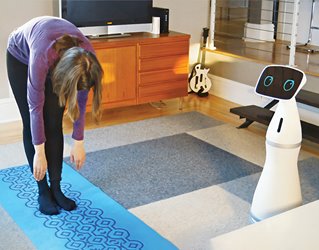
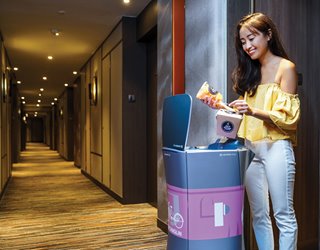
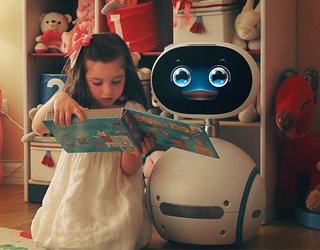
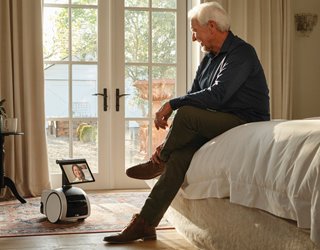
.png?width=854&height=480&ext=.png)




